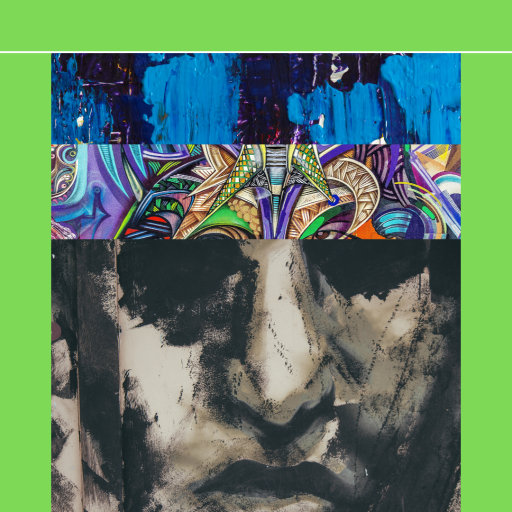A Different Perspective on Art: Modern Art and Its Painters
15 Ekim 2022Pelin Şen
Modern art, according to general information, is the period of art from 1880 to 1960-1970 (Palaz, 2021). At the beginning of this art movement, the main driving factor was that artists stopped reflecting the world in their art as they perceived it, and they combined artistic thought with philosophical thought (Tumbul, 2021). Modern art has also pioneered many popular movements such as symbolism, expressionism, cubism, surrealism, minimalism, Dadaism, and suprematism from the beginning to the end. If we examine modern art closely, it can be clearly said that one of its most essential features is being far from the traditional understanding of art. In addition, the artists of the modern era did not think of their art as a goal and aimed to make it a tool. This shows us that in this period, art was not made for society but for art itself. In this article, I will examine the modern art period by analyzing some artists who pioneered this period.
The most prominent feature of the period is that more abstract works were produced in the modern art period. This is because contemporary art is an art movement suspicious of its core and methodology. For this reason, the period’s artists aimed to create a symbolic narrative focused on the abstract world. Some artists have included more unusual objects and drawing techniques in their works, and some have preferred to add a new perspective to the existing methods and transform them.
Various artists adopted these modern techniques and reflected them in their works. The first and foremost among them is Pablo Picasso, who is known very well even outside the art circles today. Picasso was among the founders of the Cubist movement. On the other hand, since Picasso adopted academic realism when he first started painting, it is seen that he included traces of this movement in his early paintings. What led him to move away from realism to modernism was his travel to Paris. Picasso, who had a difficult time during his years in Paris, continued to produce more despite everything, and these tough times contributed positively to his creativity. Due to these contributions, Picasso’s perspective on art changed. Later, in 1909, he combined his paintings with geometry like Georges Braque did, thus starting the analytical cubism movement. It indicates that Picasso is a versatile and creative painter. Among the most famous pictures of Picasso in the Cubist movement are “The Weeping Woman (1937)”, “Blue Naked (1902)” and “Dora Maar and the Cat (1941)”. In these and many other works, we can clearly see the characteristics of the Cubist movement.
Another artist who founded modern art was Marcel Duchamp. The main purpose of Duchamp was to break down, change and simplify all the traditional patterns in his works. Therefore, Duchamp adopted the Dadaist movement by rejecting the requirements of conventional art. The event that affected Duchamp’s turn into Dadaism was the First World War. Dadaism started with the desire of artists to bring a new perspective to art around Switzerland, which was neutral during the war. In line with this desire, some artists wanted to use more unusual materials such as paper, iron, and wood in their works, not traditional materials such as paint and clay. Influenced by this movement, Duchamp combined all kinds of simple and meaningless materials in his works and started to create his own works in this way. In addition, “The Fountain (1917)”, “Big Glass (1917),” and “L.H.O.O.Q. (1919)” can be cited as examples of Duchamp’s works that are popular in the Dadaism movement. When we examine these works closely, we clearly see that they are different from the concept of art that we all know and that they consist of different materials. This actually confirms the sentence “A war against tradition,” which is frequently used in the Dadaist movement.
The third popular name of the modern art era is Kazimir Malevich. In a ‘suprematist’ fashion, Malevich combines abstract concepts with geometric shapes and looks at art from a philosophical perspective. A philosophical perspective also inspires the emergence of this trend: Malevich makes his works with the wish of a beautiful world where there is no evil all the time. The main modern paintings of Malevich are “Knife Sharpener,” “Office and Room,” and “Women Carrying Buckets.”
To sum up, modern art led to various styles and allowed artists to express themselves more openly and freely in different forms. Moreover, modern art is still influential today, as modern art is exhibited in various art galleries and goes on to inspire many new artists. Therefore, modernism has made many contributions from the past to the present and keeps reshaping the perspective of art.
References
- Kazimir Malevich Biography and Samples Archive. (n.d.). istanbulsanatevi.com. Retrieved May 10, 2022, from https://www.istanbulsanatevi.com/category/sanatcilar/soyadi-m/malevich-kazimir/
- Malevich Moving the Square Beyond Being a Geometric Shape. (2020, February 16). Sanatinoykusu.com. Retrieved May 10, 2022, from https://www.sanatinoykusu.com/kazimir-malevich/
- Palaz, F. (2021, February 3). Modernizm sanat akımı nedir? [What is Modernism art movement?] Sanatla Art. Retrieved May 29.2022, from https://www.sanatlaart.com/modernizm-sanat-akimi-nedir/
- The Artist Marcel Duchamp, Who Revolutionized the History of Art with the Urinal. Art Platform Telling the Works and Lives of Painters. (2020, March 7). Sanatinoykusu.com. Retrieved May 10, 2022, from https://www.sanatinoykusu.com/marcel-duchamp/
- Tumbul, E. M. (2021, November 19). Modern Sanat nedir? Özellikleri, ressamları ve eserleri [What Is Modern Art? Features, painters and works]. Sosyologer. Retrieved May 10, 2022, from https://www.sosyologer.com/modern-sanat-nedir/

